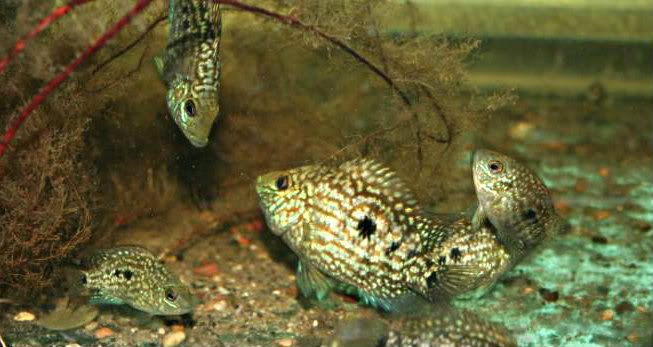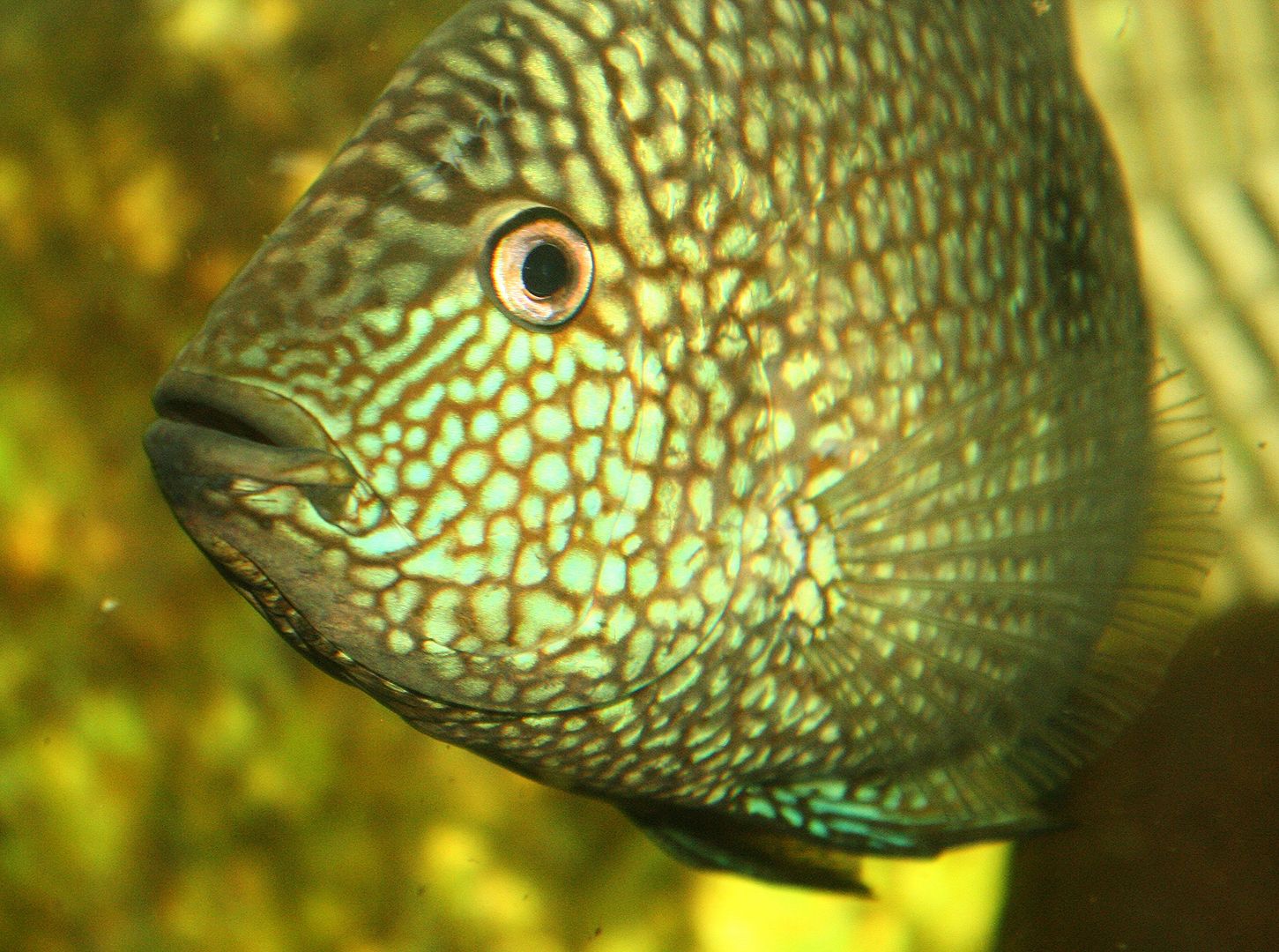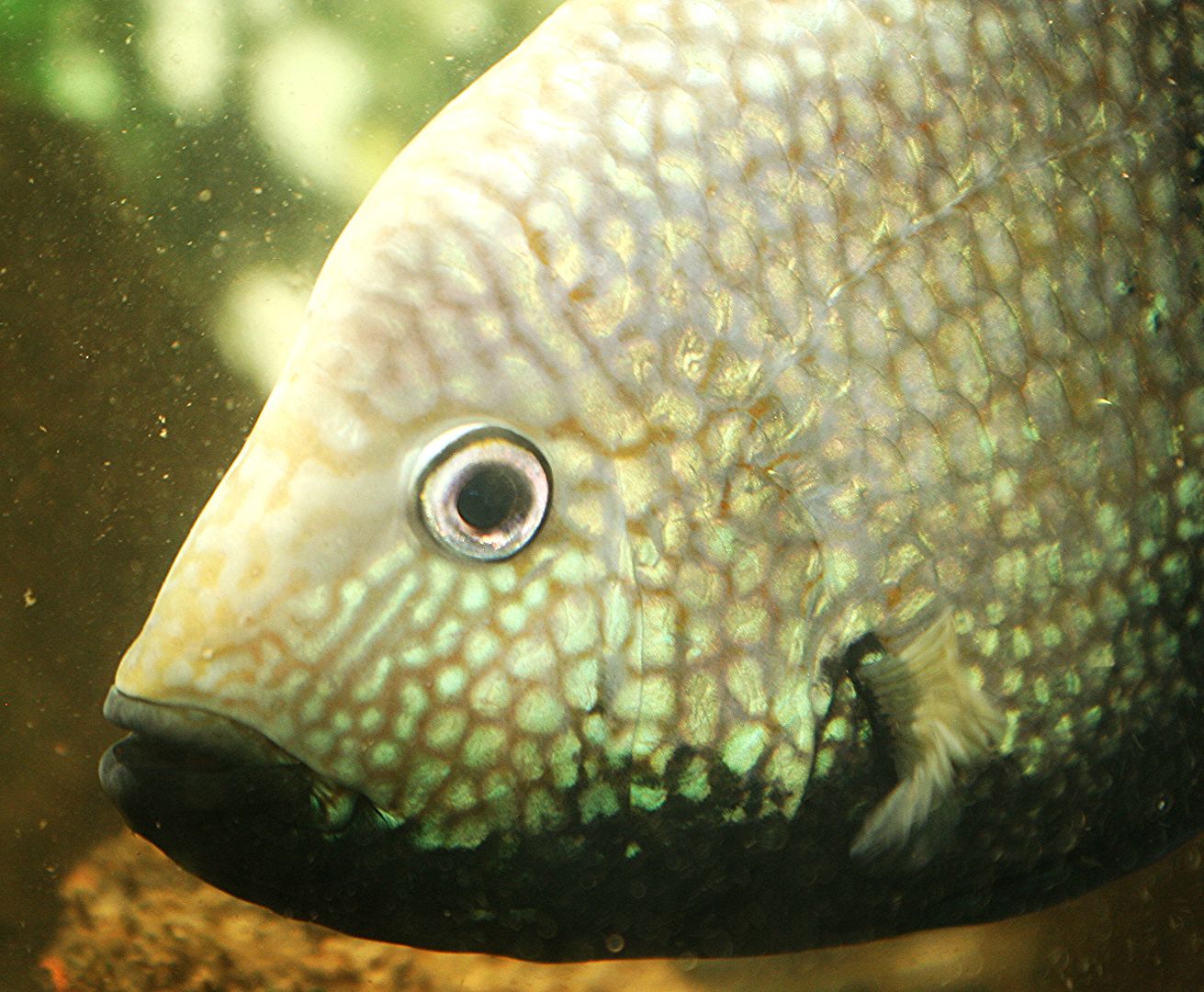Yes that's true Frank, larger spots are usually carpintus.
Although for years both species have been interbred in aquariums (mostly because people didn't realize the difference between the half dozen or so species of Herichthys (much like what happened to Paratilapia)) so there is an aquarium strain that pervades LFSs, or chain stores, those stores that don't order from trusted people Rapps, or Gage, etc I find to be suspect.
I've been in LFSs that can't tell the difference between a fire mouth and a JD, so telling Herichthys apart would be a gargantuan leap for most.
And when young is very hard to tell them apart.

Above a young H tamasopoensus
below carpintus "Chairel"

or even telling a species apart when in different stages of life can be interesting
male carpintus one day

same male another day







